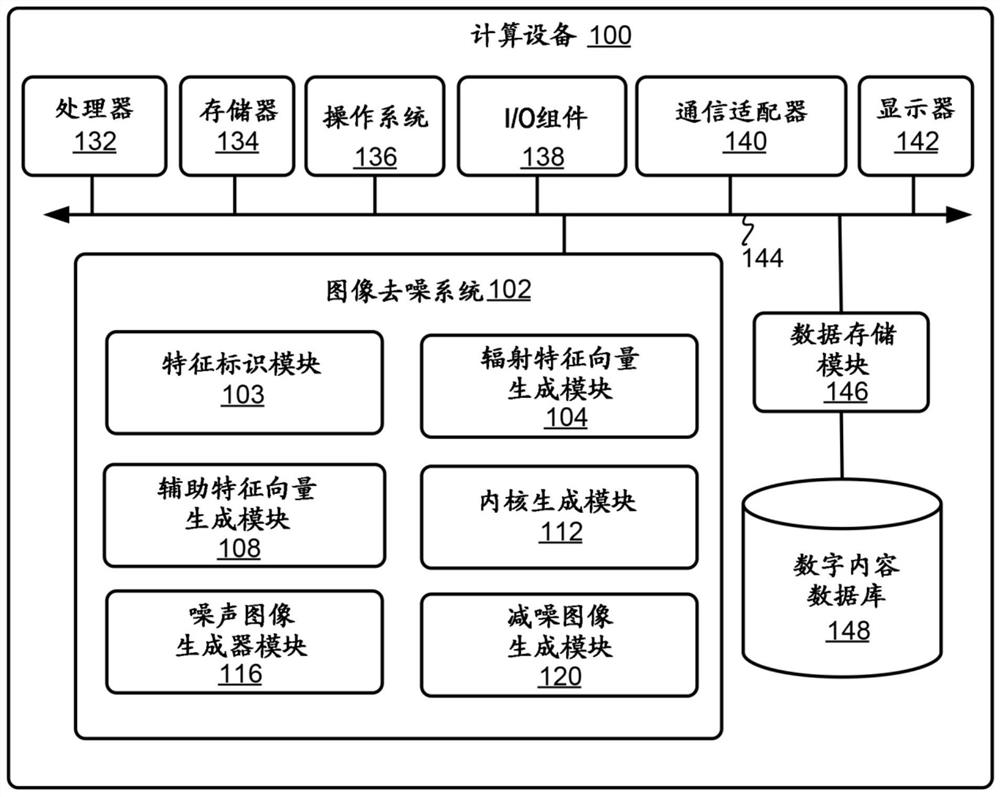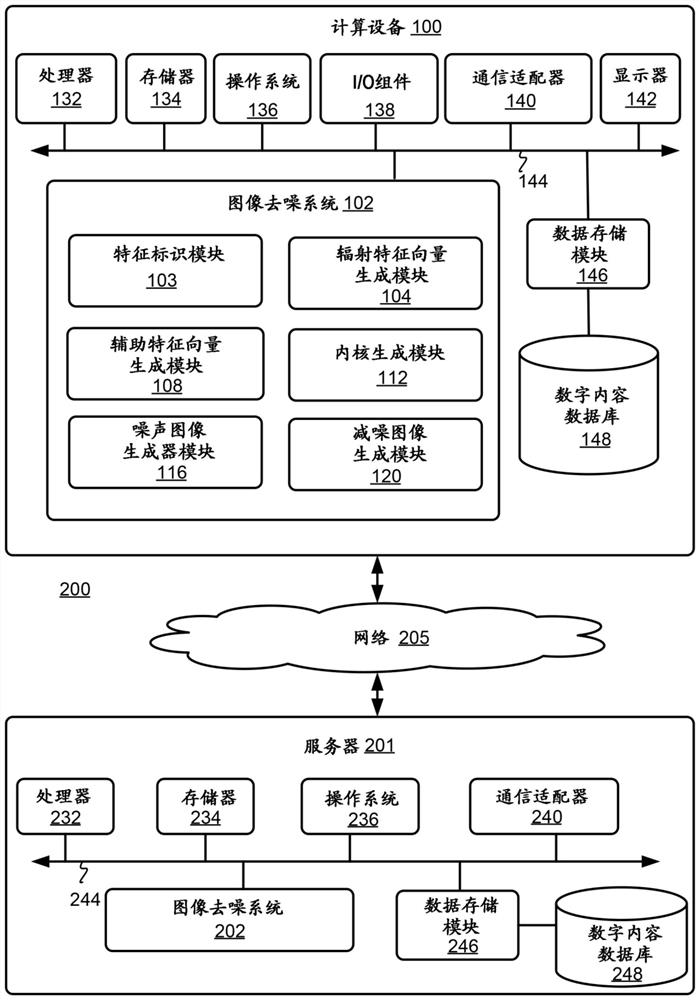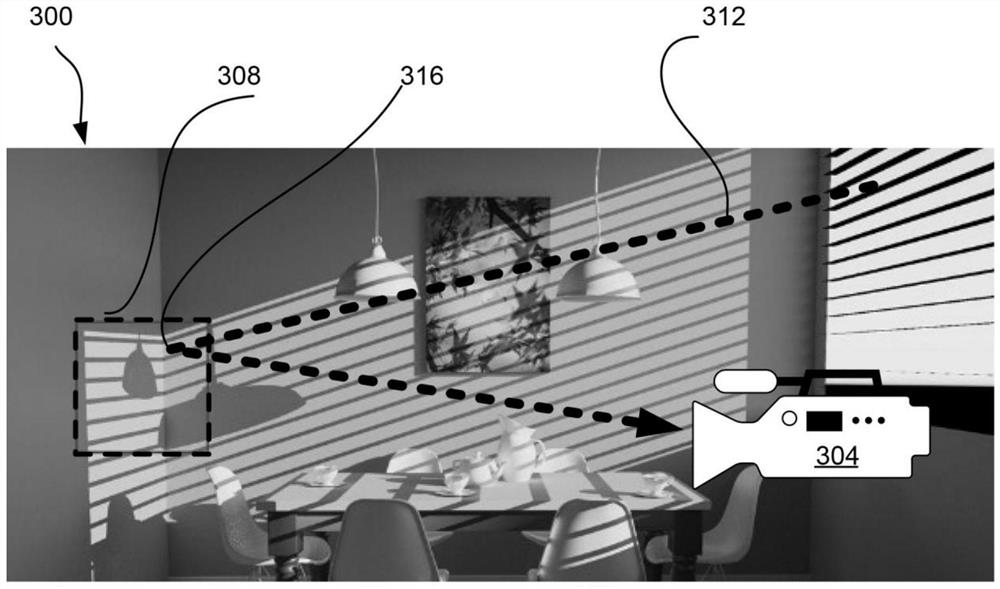De-noising images drawn using monte carlo drawing
An image and pixel technology, applied in the field of image denoising using the Monte Carlo method, can solve problems such as large computational burden
- Summary
- Abstract
- Description
- Claims
- Application Information
AI Technical Summary
Problems solved by technology
Method used
Image
Examples
example 1
[0226] Example 1. A method for denoising an image, the method comprising: identifying a plurality of corresponding sampling points within individual pixels in a set of pixels of a first image; for the individual sampling points, estimating the Corresponding radiation vectors of light received at; generating corresponding intermediate radiation features for individual pixels in the set by the first machine learning module, based at least in part on radiation vectors associated with a plurality of corresponding sampling points within the corresponding pixels a vector; generating, by the second machine learning module, a corresponding final radiance feature vector for individual pixels in the set based at least in part on the intermediate radiance feature vector of the corresponding pixel and one or more adjacent pixels; and based at least in part on the final radiance feature vector to generate a second image, wherein the second image has less noise and is more realistic than the...
example 2
[0227] Example 2. The method of example 1, wherein: generating a final radiation feature vector comprises: generating, for each pixel in the set, a corresponding final radiation feature vector having at least a corresponding first segment and a corresponding second segment; and The method also includes generating a first subset of kernels with a first magnitude based at least in part on the first segment of the final radiation eigenvectors, and generating a first subset of the kernels with a first magnitude based at least in part on the second segment of the final radiation eigenvectors Second kernel subset of two strides.
example 3
[0228] Example 3. The method of Example 2, wherein generating the first subset of kernels includes generating a first kernel in the first subset of kernels, the first kernel including a first pixel as the target pixel and a plurality of adjacent to the target pixel pixel, where the first kernel has a stride X, indicating that pixels within the first kernel that are X pixels away from the target first pixel are assigned a non-zero weight, X is a positive integer, and the second pixel within the first kernel is the same as the target first pixel The pixels are X pixels apart, and wherein the first weight specifying the contribution of the radiation value from the second pixel to the first pixel is based, at least in part, on (i) the first segment of the first final radiation eigenvector for the first pixel and the (ii) is calculated for the distance between the first segments of the second final radiation eigenvector for the second pixel.
PUM
 Login to View More
Login to View More Abstract
Description
Claims
Application Information
 Login to View More
Login to View More - R&D
- Intellectual Property
- Life Sciences
- Materials
- Tech Scout
- Unparalleled Data Quality
- Higher Quality Content
- 60% Fewer Hallucinations
Browse by: Latest US Patents, China's latest patents, Technical Efficacy Thesaurus, Application Domain, Technology Topic, Popular Technical Reports.
© 2025 PatSnap. All rights reserved.Legal|Privacy policy|Modern Slavery Act Transparency Statement|Sitemap|About US| Contact US: help@patsnap.com



